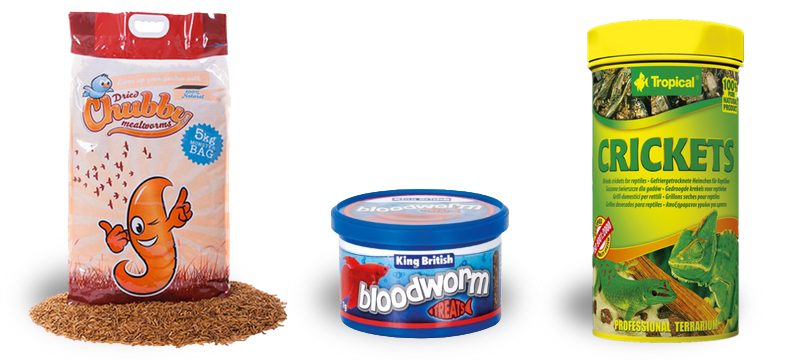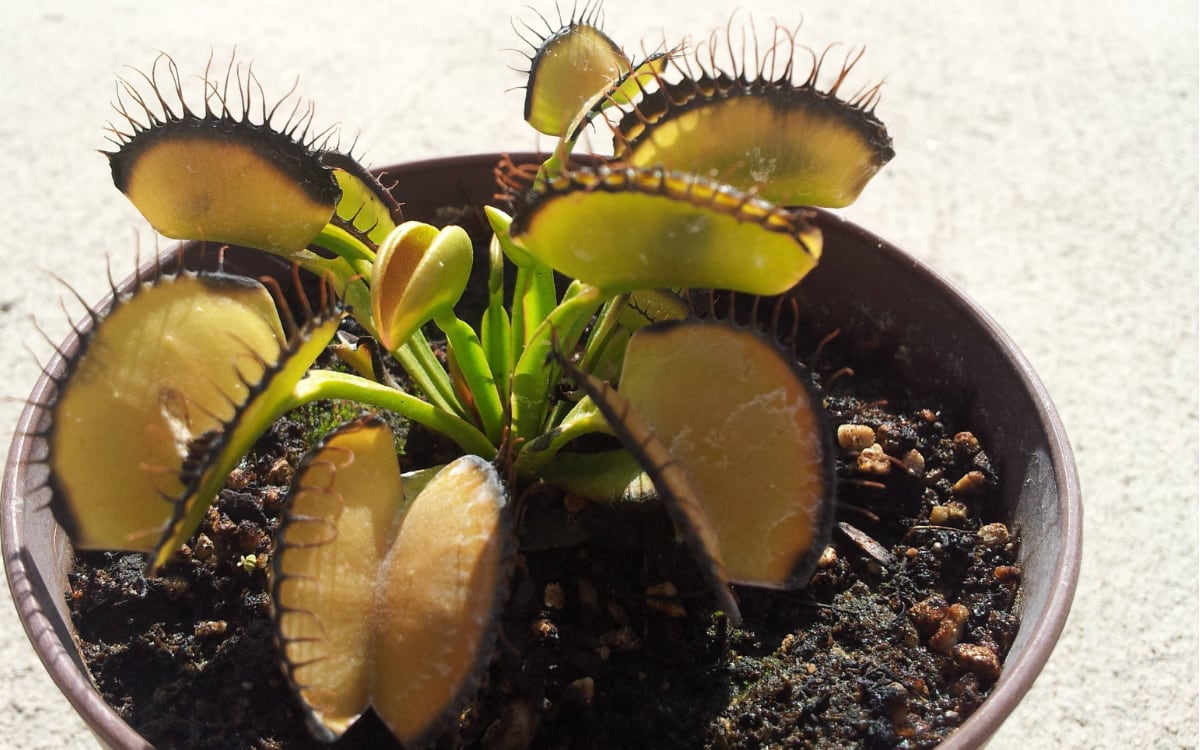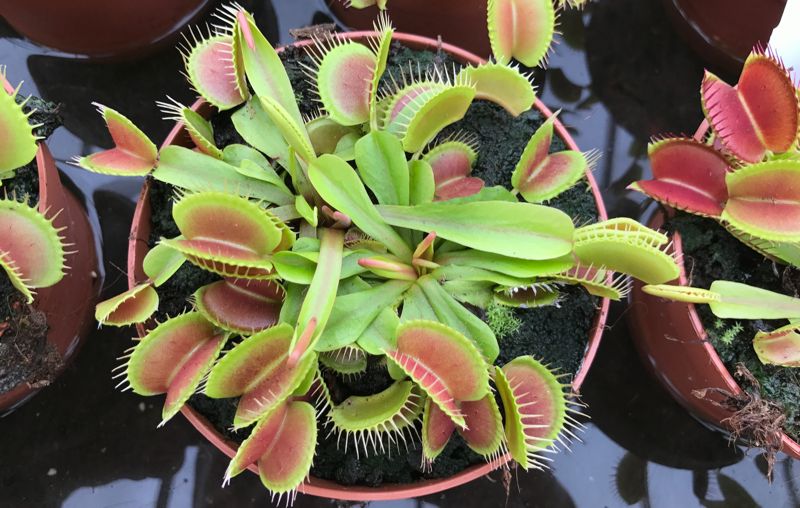How Do I Bring My Venus Fly Trap Back to Life?

FAQ: Why is my Venus flytrap turning black?
4 October 2017
If you've fed your Venus flytrap a tasty meal, only to have the trap turn black and die over the following days, don't panic!
Traps can turn black for many different reasons, and most are not fatal to the plant. I've listed 5 of the most common causes below.
1. Inappropriate food
Don't feed your plant bits of sausage, chocolate, or anything else it wouldn't catch in the wild. This is a guaranteed way to cause the trap to rot. Snip off the dead leaf, and start feeding your plant properly!

If you're feeding your plant bugs, don't give it anything larger than about 1/3 the size of the trap. If the insect is too big, or if a stray leg or antennae is left poking out, it's likely the trap will be unable to fully seal, which will again cause the leaf to die. Simply snip it out and wait for new growth to replace the old trap.
2. Stress from poor growing conditions
If your growing conditions aren't ideal, your plant's traps may turn black every time they're fed, or even if they haven't been fed at all.

- Are you giving your plants suitable water? Tap water and bottled water often contain high levels of dissolved minerals which can burn your plant's roots. Buy a TDS reader to test your water.
- Is your plant getting enough light? Venus flytraps like full sun; growing them in a gloomy position will cause traps to turn black more frequently.
- Are you using appropriate soil? Like most carnivorous plants, Venus flytraps need a nutrient-poor soil. Normal potting compost or anything with fertilizer will hurt your plant! Use peat moss mixed with lime-free horticultural sand and/or perlite (the classic carnivorous plant soil, available from specialist nurseries and on Amazon), or pure sphagnum moss - live or dried - which you can buy from The Sphagnum Shop.
You can read my complete Venus flytrap growing guide here, or grab a copy of Peter D'Amato's carnivorous plant "bible", The Savage Garden.
3. Overfeeding
Closing a trap and digesting an insect requires energy. If you feed every single trap on your plant - or worse, trigger the traps for fun without giving them a meal - it's likely that some of the leaves will turn black and die.
This probably isn't fatal, so don't panic. Your plant is simply focusing its energy on producing new leaves. Hold off from feeding for a month or two, and in future, try to avoid feeding more than 1 trap per week (especially on small plants). You might also try putting your plant outside on a sunny day to let it try catching some food naturally.
Some cultivation advice I always give to new growers: feeding your plants should be the very last thing on your list! There are more important things which you should tackle first if you wish to grow carnivorous plants successfully.
4. Winter dormancy
Like many other temperate plants, Venus flytraps require a cold winter dormancy in order to survive long-term. As the daylight hours shorten and temperatures drop, it's normal for some traps to go black and die as your plant enters its winter resting phase. In the northern hemisphere, this period typically lasts between November and February.
If your flytrap's leaves have started to die in late Autumn (and if you've taken care of all their other growing requirements!), it's likely that your plant is simply starting its dormancy. This is completely normal, and you can safely trim off any dead leaves and slightly reduce watering until Spring. Your plant will then begin producing new traps when the days get longer and temperatures rise. You can read more about Venus flytrap dormancy here.
5. Natural lifecycle
If it's the oldest traps in the rosette which are turning black, or if the blackening trap has already caught and digested several insects, then this is likely a normal part of the trap's lifecycle. If your plant is continuing to put out new growth to replace the old traps, then you have nothing to worry about.

Hope this was useful - any questions, let me know in the comments. Happy growing!
Share
Subscribe via email
How Do I Bring My Venus Fly Trap Back to Life?
Source: https://www.carnivorousplants.co.uk/blog/why-is-my-venus-flytrap-turning-black/
0 Response to "How Do I Bring My Venus Fly Trap Back to Life?"
Post a Comment